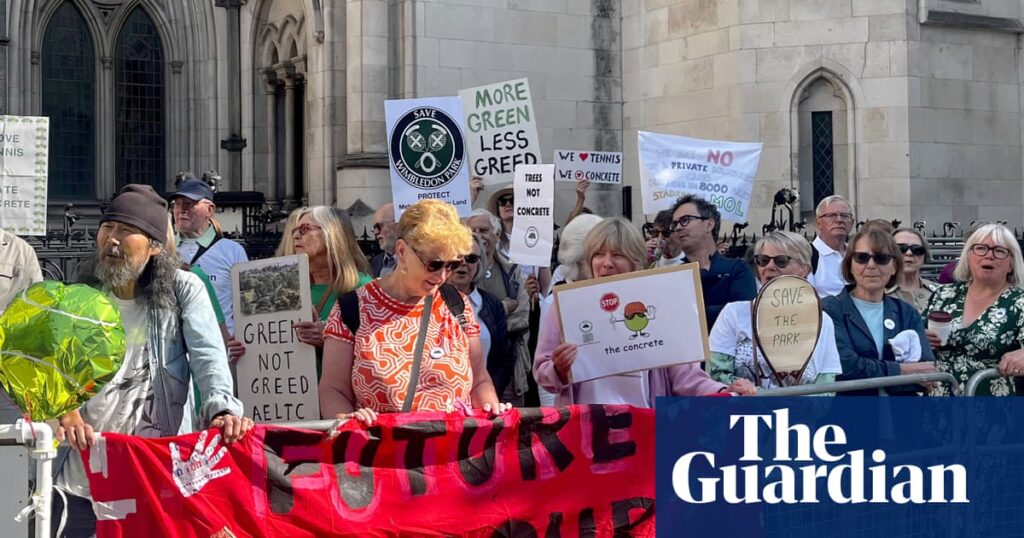A proposed expansion of the Wimbledon tennis site will go ahead after the high court ruled in favour of an original decision to allow a further 39 courts, including an 8,000-seat show court, on the grounds of the old Wimbledon Park golf club.
A judicial review, which started as this year’s 138th championship was under way, came after the campaign group Save Wimbledon Park (SWP) took legal action against the Greater London Authority (GLA) over its decision last year to allow the All England Lawn Tennis Club to almost triple its size.
Campaigners asked the judge to quash the original decision made in September 2024 and order it to be sent back to the GLA for reconsideration.
Welcoming the ruling, the All England club’s chair, Deborah Jevans, said: “It is clear that we have a robust planning permission that enables us to create a permanent home for the Wimbledon qualifying competition as well as delivering 27 acres of beautiful new parkland for local people, providing public access to land that has been a private golf course for over 100 years.”
On Monday, Mr Justice Saini dismissed the challenge, saying: “In short, the defendant’s decision on the relevance of deliverability, applying to both the statutory trust and the restrictive covenants, was a planning judgment rationally exercised and having regard to appropriate and relevant factors.”
In response to Monday’s ruling, the campaign group said it had been advised it should challenge the decision, and claimed that the GLA had made a “significant” legal error over the special legal status of the park.
Christopher Coombe, a director of SWP, said: “This judgment would, if it stands, set a worrying precedent for the unwanted development of protected green belt and public open spaces around London and across the country.”
The campaign group said there were other legal protections for the park that would be “insurmountable” for property developers, including future action in January brought by the All England club that will determine whether the land is for public recreation or protected by a statutory trust.
Coombe said: “The [All England club] will surely have noted the considerable public outrage about this development, most recently expressed outside the law courts, and we continue to hope that they could be persuaded to engage constructively with us, with a view to achieving a resolution of this four-year-old dispute.”
Residents have argued against the loss of green space as well as 10 years of disruption to the local area. They have also questioned its legality, as the proposed expansion, straddling the boroughs of Merton and Wandsworth, would be on metropolitan open land, which has the same protected status as green belt.
after newsletter promotion
The club’s counterargument is that what was once a private golf course will be converted into land that will offer access to the public, including a 9.3-hectare (23-acre) park, with further green space open through the year outside the championships. The scaling up of facilities is necessary for players and to maintain the prestige of the grand slam tournament, it says.
The dispute goes back to 1993 when the All England club bought the golf course land from Merton council for £5.2m. It signed a covenant agreeing it would not use the land other than for leisure, recreational purposes or as open space. The campaign group, which raised £200,000 before the review, believes the proposals have violated that pledge.
The mayor of London, Sadiq Khan, welcomed the ruling. He said the plans would “cement Wimbledon’s reputation as the greatest tennis competition in the world and London as the sporting capital of the world.
“This scheme will bring a significant range of economic, social, cultural and environmental benefits to the local area, the wider capital and the UK economy, creating new jobs and green spaces.”
Planning permission for the expansion was first granted by the London deputy mayor Jules Pipe, who said the proposals would deliver benefits that “clearly outweigh the harm”.


